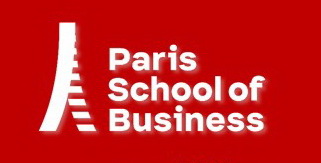This call takes place in newPIC activities developed with the AIMS research group 'Resources, Competences, Dynamic Capabilities".
A previous workshop was organized in March 2016, on PSB Campus, on the topic Microfoundations of Dynamic Capabilities.
You can access more information on this activity in clicking on the icon...
Convenors:
- Valerie MERINDOL, PSB / newPIC, email: vm (at) newpic.fr
- Nicolas AUBOUIN, PSB / newPIC, email: na (at) newpic.fr
- David W. VERSAILLES, PSB / newPIC, email: dwv (at) newpic.fr
Deadlines
- 15-JAN-2017: Abstract (5-10 pages, bibliographie comprise) ou articles complets
- 25-FEB-2017: Responses to auteurs
- 25-MAR-2017: Final paper submission
- 28-MAR-2017: Conference
Text of the call
The concept of “dynamic capabilities” developed by Teece et al (1997) has now become a key dimension of the academic literature
addressing the firms’ ability to innovate, and to preserve their competitiveness. The ability to articulate, build, and reconfigure
knowledge assets and resources has become a major aspect in the understanding of the firms. The importance of these criteria increases
when firms situate in turbulent environments, where the dynamics of change impacts at the same time technologies, the institutional framework,
and the clients’ needs/expectations. Teece (2007) also points out that dynamic capabilities relate to the firms’ ability to sense and then
seize new opportunities, and finally transform themselves in order to create value.
The large volume of academic publications available either on the issue of dynamic capabilities or on the management of innovation
makes it sometimes difficult to appraise their actual contributions with respect to managerial practices and to organizational change.
Firms develop today new organizational models in order to cope with resources orchestration. They confront new technological and socio-economic
challenges.
This SIG/track focuses on the joint contributions of the dynamic capabilities and of the management of innovation in order to address
such challenges. We expect contributions focusing in an explicit way on the link between innovation and dynamic capabilities. We point out
potential directions below, without limiting contributions to these items:
- How is it possible to describe open innovation, ambidexterity, cooperation or frugal innovation as features of the firm’s dynamic capabilities?
What are precisely the dynamic capabilities suited to executing strategies running on these engines?
- How is it possible to bridge the organization’s creativity as a key dimension of resources orchestration?
- Are firms adopting different models/types of dynamic capabilities if they focus on different natures/types of innovation (architectural
innovation; radical, incremental, strategic innovation; etc)? If they focus on different cycles for the development of products? If they work
in different sectors? Do models of innovation actually shape the nature of dynamic capabilities?
- Digitalization is the source of major transformation at all organizational levels. To which extent do dynamic capabilities contribute to
understanding strategies used for the digitalization of organizations?
- It has become commonplace to characterize as “digital continuity” the transformation of conception, production and distribution made
possible by ITs, and the relations between these traditional functions of the firm. How is it possible to further investigate
these transformations in reference to dynamic capabilities?
- How can the investigation of dynamic capabilities contribute to the analysis of firms active in the “sharing economy”, or
instantiating the “platform economy” such as Uber, Blablacar or AirBnB?
Contribution to this SIG/track can borrow from any major theoretical framework: the macro-organizational approach of
dynamic capabilities, the micro-foundations approach, or the approach grounded in practices.
Bibliography
- Andropoulos C. Lewis M. (2009), “Exploitation-exploration tensions and organizational ambidexterity:
managing paradoxes of innovation”, Organization science 20 (4), pp. 696-717
- Anthony S. (2012), "The Corporate Garage", Harvard Business Review, Septembre, pp. 45-53
- Argyres, N. Felin, T., Foss, N.J., and Zenger, T. (2012), “The organizational economics of organizational
capabilities: a research agenda”, Organization Science, vol 23: 1213-1226
- Björk, J., Boccardelli, P. & Magnusson, M. (2010), Ideation Capabilities for Continuous Innovation. Creativity and Innovation Management, 19(4), pp.385–396
- Bottollier-Dupois, F. (2012), FabLabs, makerspaces : entre nouvelles formes d’innovation et militantisme libertaire,
Cahier de recherche de l’Observatoire du Management Alternatif, HEC, août
- Foss, N.J. & Pedersen T. (2004), “Organizing knowledge processes in the multinational corporation: an introduction”,
Journal of International Business Studies, vol 35, pp 340-349
- Foss, N.J. (2011), "Why micro-foundations for resource-based theory are needed and what they may look like"
Journal of Management, 37 (5), 1413–1428
- Lichtenthaler & Lichtenthaler (2009),“A capability based framework for open innovation : complementing absorptive capacity”,
Journal of Management studies, voll46 (8), pp. 1315-1338
- Litchfield R.C. & Gentry R.J. “Perspective-taking as an organizational capability”,
Strategic Organization, 8(3), pp. 187-205
- Schreyogg G. & Kliesch-Eberl M. (2007), “How dynamic can organizational capabilities be? Towards a dual-process
model of capability dynamization”, Strategic Management Journal, vol 28, pp. 913-933
- Teece D.J. (2007) “Explicating Dynamic capabilities : the nature and microfoundations of enterprise performance”,
Strategic Management Journal, vol 28, pp. 1319-1350
- Teece D.J., Pisano G., Shuen A., (1997), “Dynamic Capabilities and Strategic Management”,
Strategic Management Journal, vol. 18 (7), pp.1319-1350
This page will be regularly updated with information for authors.
The workshop program will be posted here once available.










